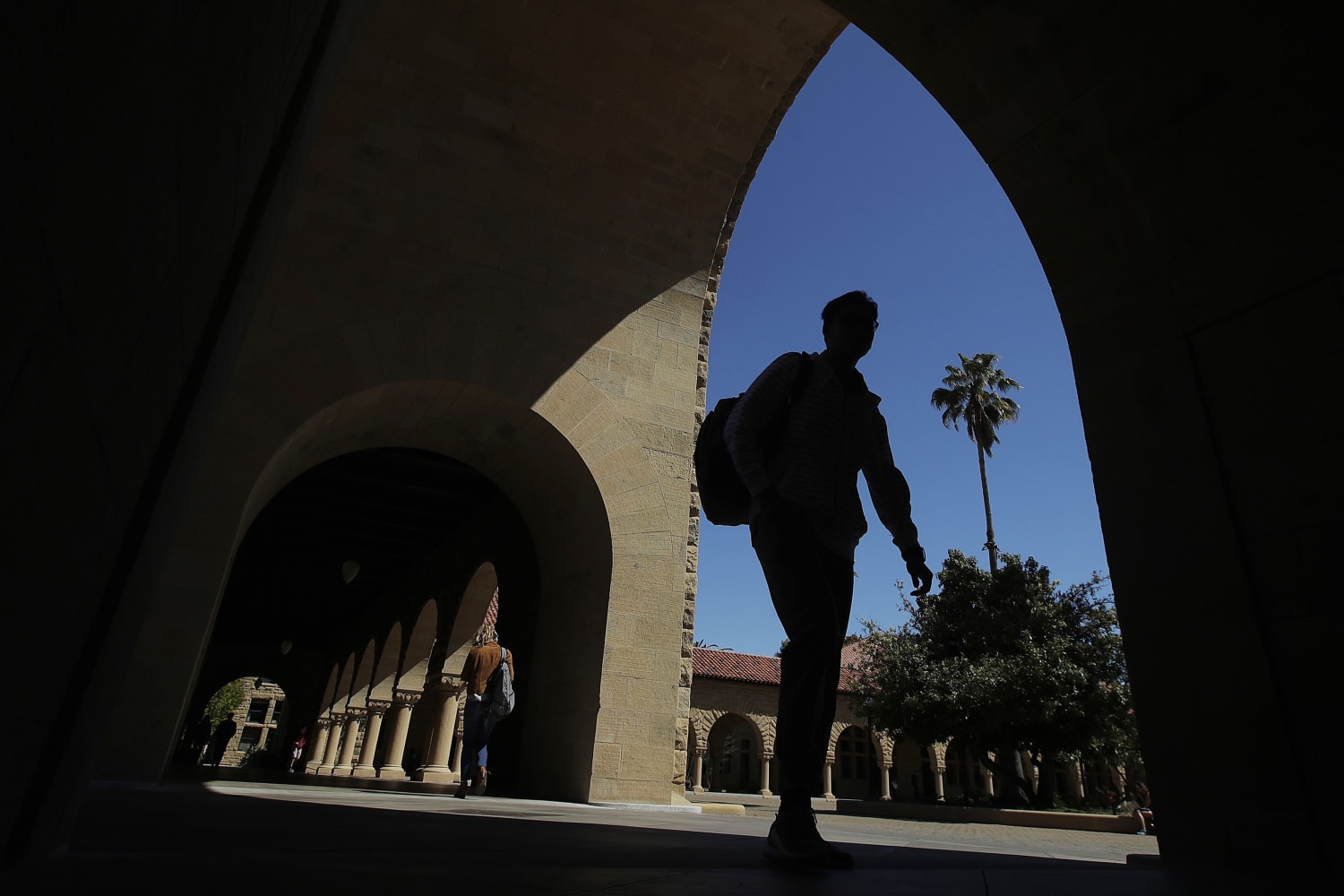
Stanford University apologized Wednesday for limiting Jewish student admissions during the 1950s — a practice that the school long denied had taken place.
Stanford President Marc Tessier-Lavigne issued the apology after a task force he appointed in January submitted a report finding the prestigious Northern California school had taken actions to suppress admissions of Jewish students just years after World War II came to an end.
“On behalf of Stanford University I wish to apologize to the Jewish community, and to our entire university community, both for the actions documented in this report to suppress the admission of Jewish students in the 1950s and for the university’s denials of those actions in the period that followed,” Tessier-Lavigne said in a letter sent out to the school’s community. “These actions were wrong. They were damaging. And they were unacknowledged for too long.”
The report found that in the early 1950s Stanford “acted to restrict the number of Jewish students” enrolling at the school under the leadership of Rixford Snyder, then Stanford’s director of admissions, and “with the awareness of many in Stanford’s administration.”
Stanford had targeted specific high schools known to have significant populations of Jewish students, allowing the school to still “claim that the university did not impose a quota on Jewish students,” the report said.
It said that despite “decades of denials,” a 1953 memo, dubbed the “Glover Memo,” clearly reported Snyder’s “intentions to act against Jewish students.”
In the memo, Frederic Glover, then the assistant to Wallace Sterling, Stanford’s president at the time, conveyed Snyder’s “desire to ‘disregard our stated policy of paying no attention to the race or religion of applicants’,” the report said.
Glover specified that Snyder was specifically concerned about two Southern California high schools that he knew had significant numbers of Jewish students: Beverly Hills High School and Fairfax High School.
“We do not know whether Snyder also took action against any other schools or students who identified themselves as Jewish on their applications, regardless of their high school,” the report said. “But we found a sharp drop in enrollments from these two schools in the class that started Stanford in the fall of 1953. No other schools experienced such a sharp reduction in students enrolling at Stanford at that time.”
“It is unclear how long this appalling antisemitic activity lasted or whether it extended to other schools or students,” Tessier-Lavigne said in his letter. “However, the report articulates how this effort to suppress Jewish enrollments had long-lasting effects and dissuaded some Jewish students from applying to Stanford in later years. And, the report shows that when questioned about its practices in later years, the university denied any anti-Jewish bias in admissions.”
“This ugly component of Stanford’s history, confirmed by this new report, is saddening and deeply troubling,” he said. “As a university, we must acknowledge it and confront it as a part of our history, as repellent as it is, and seek to do better.”
Tessier-Lavigne said he believed it would be “natural to ask whether any of the historical anti-Jewish bias documented by the task force exists in our admission process today.”
“We are confident it does not,” he said.
In a statement on behalf of Hillel at Stanford, a Jewish student organization, Executive Director Rabbi Jessica Kirschner said: “I want to lift up President Tessier Lavigne’s apology as a notable example of institutional teshuvah — an acknowledgment of past wrongdoing and clear and specific commitment to ensure a supportive and bias-free experience at Stanford,” according The Mercury News, which is based in San Jose, California.
“This is what we want for all members of the Stanford community,” she said, according to the outlet. NBC News has contacted Hillel at Stanford for comment.
Tessier-Lavigne’s apology comes as Stanford looks to address historical wrongs and as the school faces scrutiny over other issues, including mounting safety concerns after two rapes were reported on the Northern California campus in as many months.
In 2016, Stanford’s campus was also rocked by the trial and lenient sentence in the case of swim team member Brock Turner, who was convicted of three felonies after sexually assaulting an unconscious woman behind a dumpster.
Source: | This article originally belongs to Nbcnews.com










